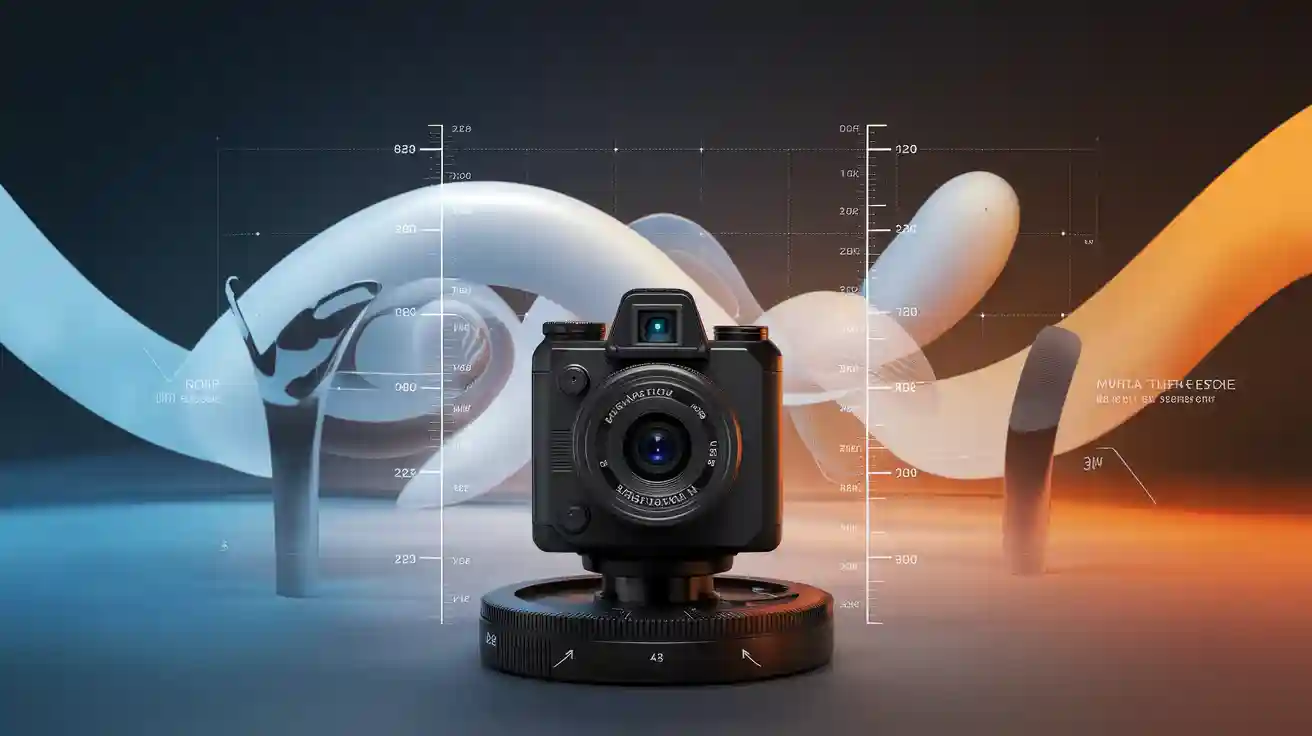
Color temperature plays a critical role in machine vision applications. It describes how the colour of light appears when measured in Kelvins. In a colour temperature machine vision system, the temperature of an ideal blackbody radiator determines the colour of emitted light. As the colour temperature increases, the light shifts from a warm, reddish hue to a cooler, bluish tone. The system uses this measurement to calibrate cameras and lighting for accurate colour analysis. Colour temperature affects how the image displays and how the system interprets colour, making it essential for precise image inspection. Consistent colour temperature ensures reliable image capture and effective automated inspection across all machine vision applications.
Key Takeaways
- Color temperature measures light color in Kelvins and affects how machine vision systems capture and analyze images.
- Choosing the right color temperature improves color accuracy, helping systems detect subtle differences and avoid errors.
- Stable color temperature and high-quality LED lighting enhance image quality and ensure consistent inspection results.
- Engineers select lighting based on inspection needs, balancing color temperature and color rendering index for best performance.
- Regular calibration and managing environmental factors keep color temperature stable, supporting reliable and repeatable inspections.
Colour Temperature Machine Vision System
Definition
A colour temperature machine vision system uses the concept of color temperature to control and analyze lighting for automated inspection. Color temperature describes the appearance of light, measured in Kelvins (K). In this system, engineers select specific lighting to match the needs of the inspection task. The color temperature of white LEDs plays a central role. These LEDs can produce warm, neutral, or cool light. The system uses this property to ensure that the image captured by the camera matches the true color of the object. This approach helps the system avoid errors in color analysis and improves the reliability of the inspection process.
Measurement (Kelvin Scale)
Color temperature uses the Kelvin scale to describe the hue of a light source. The scale starts at absolute zero and increases as the light shifts from red to blue. In a colour temperature machine vision system, the Kelvin value helps define the type of light needed for each application. For example, a low Kelvin value (2000K–4000K) produces a warm, reddish light. A medium value (4000K–5500K) creates a neutral white light. High values (5500K–8000K or more) result in a cool, bluish light. The color temperature of white LEDs often falls between 4500K and 10,000K. This range covers most needs in colour machine vision. The system uses these values to match the lighting to the inspection task, making sure the image shows accurate colors.
Tip: Choosing the right color temperature improves image clarity and color accuracy in automated inspections.
| Color Temperature Range (Kelvin) | Visual Effect Description |
|---|---|
| 2000K – 4000K | Warm white light with more red/orange hues; produces a warmer visual effect. |
| 4000K – 5500K | Neutral white light; balanced color representation between warm and cool. |
| 5500K – 8000K+ | Cool white light with more blue hues; produces a cooler, bluish visual effect. |
The table above shows how different color temperature ranges affect the appearance of white LEDs. Warm light highlights red and orange tones. Neutral light balances all colors. Cool light emphasizes blue tones. These differences impact how the system captures and processes the image.
Black Body Model
The black body model explains the science behind color temperature. Scientists use this model to describe how an ideal object, called a black body, emits light when heated. As the temperature of the black body rises, the color of the emitted light changes. The light shifts from red to yellow, then to white, and finally to blue as the temperature increases. This shift forms the basis for measuring color temperature in Kelvins. The black body model helps engineers understand how to select the right color temperature of white LEDs for a colour temperature machine vision system.
- The black body model represents an ideal emitter that produces a continuous spectrum of light based on its temperature.
- As the temperature increases, the color of the light moves from red to blue.
- The Planckian locus, derived from black body radiation, maps these color temperatures and serves as a reference for correlated color temperature (CCT) in non-thermal light sources like LEDs.
- Understanding this model helps engineers choose LED lighting with specific color temperatures to optimize inspection accuracy, especially when precise color reproduction is critical.
In practice, most white LEDs do not match the black body curve exactly. Engineers use correlated color temperature (CCT) to compare the color of LED light to the black body model. This comparison helps the system maintain consistent color analysis, even when using different types of LEDs. The colour temperature machine vision system relies on this science to deliver accurate and repeatable results.
Importance
Color Accuracy
Color temperature plays a vital role in achieving accurate color representation in machine vision applications. The choice of lighting affects how the system perceives and analyzes colors. Engineers often select white LED lights with a high color rendering index (CRI) to ensure the system captures all visible wavelengths. The specific balance of blue or red content in the light, determined by color temperature, influences how well the system can distinguish between similar shades. This becomes especially important when the inspection task requires precise color differentiation.
- Color temperature, as part of correlated color temperature (CCT) and CRI, directly impacts color accuracy.
- White LED lights, which contain all visible wavelengths, are ideal for most inspections.
- The amount of blue or red in the light changes how the system detects colors.
- High CRI light sources help the system show true colors.
- Filters can block unwanted wavelengths, improving contrast and making defects easier to spot.
- Testing different lighting setups, including color temperature, helps optimize inspection results.
Colour analysis tools rely on stable color temperature to deliver consistent results. When lighting conditions change, colors may appear different, leading to errors in detection. By controlling color temperature, engineers ensure that the system’s color analysis tools work reliably across different inspections.
Image Quality
Image quality depends heavily on the color temperature of the lighting used in the inspection process. The color of light affects how the camera captures details and how the system processes the image. Different materials reflect and absorb light in unique ways. Selecting the right color temperature can enhance contrast, making it easier to identify features or defects.
Studies show that lighting conditions, including color temperature and spectral quality, have a significant impact on image quality and color measurement accuracy. In controlled laboratory settings, using continuous-spectrum white light and proper white balancing leads to high precision in color measurements. However, changes in ambient temperature or lighting on the factory floor can cause shifts in image values, reducing repeatability and reliability. Stable color temperature and careful lighting control are essential for maintaining high image quality in automated inspections.
Note: White light with adjustable color temperature is versatile. It provides even illumination for general inspection, barcode reading, and packaging checks.
A table below summarizes how color temperature influences image quality:
| Lighting Condition | Effect on Image Quality |
|---|---|
| Stable color temperature | Consistent, accurate color measurements |
| Variable color temperature | Shifts in color values, reduced repeatability |
| High CRI white LEDs | True-to-life color representation |
| Proper white balancing | Minimal colorcast, improved accuracy |
Inspection Consistency
Consistent inspection results depend on controlling color temperature throughout the machine vision process. Variations in lighting, shadows, and reflections can distort color perception and introduce noise into the image. These challenges make it difficult for the system to deliver reliable results.
- Lighting changes cause colors to appear differently, complicating detection.
- Shadows darken parts of the image, hiding important details.
- Reflections can alter color appearance, adding unwanted noise.
- Colour analysis tools use preprocessing techniques, such as smoothing filters and lighting correction, to clean images before detection.
- Post-processing methods further refine results and remove noise.
- Advanced denoising tools help maintain color accuracy in dynamic environments.
- Using color spaces like HSV separates color from brightness, aiding consistent detection under different lighting.
Color correction addresses these challenges by stabilizing the image before analysis. Engineers use both hardware and software solutions to standardize color and intensity. Regular evaluation and adjustment of color management strategies ensure that the system maintains inspection consistency, even as conditions change.
Tip: Combining stable color temperature with effective color correction leads to reliable, repeatable inspection outcomes.
Selection in Colour Machine Vision
Application Needs
Selecting the right color temperature for a colour machine vision system depends on the inspection task. Engineers focus on maximizing contrast between the object and its background. For example, using monochrome lighting opposite the object’s color on the color wheel can highlight features. In the printing industry, green light makes red stamps stand out. When inspecting objects with multiple colors, white led lighting or RGB led lighting provides balanced contrast and flexibility. The spectral composition of led light, including red, green, and blue wavelengths, affects how the system detects subtle differences. Calibration with known parts helps optimize color temperature for each inspection.
- Color temperature impacts image reproduction, especially for tasks like distinguishing between grey and brown panels.
- Accurate color reproduction for multi-color objects requires considering both color temperature and color rendering index.
- Matching the spectral output of the led to the camera sensor’s sensitivity improves inspection results.
Tip: Maximizing contrast on features of interest enhances inspection accuracy and reduces false detections.
CRI and Lighting Types
The color rendering index (CRI) measures how accurately a light source displays colors compared to natural sunlight. High CRI values, especially above 90, are important for applications that need precise color discrimination. CRI works together with color temperature to ensure faithful color representation. Led lighting offers high CRI and stable color temperature, making it ideal for colour machine vision. Fluorescent lights are efficient but lack flexibility and intensity. Halogen lamps provide bright, continuous light with high CRI but generate heat and have shorter lifespans. Led lighting stands out for its stability, immediate output, and long service life.
| Lighting Type | Color Temperature Stability | CRI Range | Notes |
|---|---|---|---|
| LED | High | 70–95 | Stable, flexible, long lifespan |
| Fluorescent | Moderate | 60–85 | Flicker, less flexible |
| Halogen | Moderate | 95+ | High heat, short lifespan |
Optical filters can further enhance color accuracy. These filters block unwanted wavelengths, improving contrast and subject recognition. By combining high CRI led lighting with optical filters, engineers achieve reliable and repeatable inspection results.
Environmental Factors
Environmental factors play a key role in selecting color temperature for colour machine vision. Temperature changes can affect led brightness and sensor performance, leading to inconsistent color detection. Ambient light may interfere with the inspection, but optical filters and camera exposure adjustments help reduce this effect. Controlled lighting conditions and frequent calibration maintain stable color reproduction. Led lighting with proper color temperature and high CRI improves the system’s ability to detect subtle color differences.
- Temperature impacts led and sensor performance.
- Ambient light interference can be managed with filters and exposure settings.
- Regular calibration aligns the camera and lighting setup for consistent results.
- Different lighting techniques, such as ring or dome lights, help manage shadows and reflections.
Note: Maintaining stable color temperature and using high-quality led lighting ensures precise and reliable color detection in changing environments.
Color Temperature Examples

Electronics Inspection
Electronics manufacturers rely on precise colour temperature control to ensure accurate inspections. They use white leds with stable output to avoid color shifts during image capture. When temperature fluctuates, leds may dim or fail, causing inconsistent lighting. Dust and vibrations from machinery can also reduce brightness and create uneven illumination. These issues affect the image quality and the performance of colour analysis tools. Engineers address these challenges by using thermal management, IP-rated fixtures, and regular cleaning. Vibration-resistant designs help maintain stable lighting. Advanced cameras and colour analysis tools work together with controlled colour temperature to detect defects in circuit boards and electronic components.
- Temperature changes can cause leds to lose brightness.
- Humidity and dust impact the reliability of white leds.
- Vibration-resistant fixtures keep lighting stable in high-speed lines.
Food and Packaging
In food and packaging inspection, the choice of colour temperature directly impacts accuracy and speed. Machine vision systems use white leds and programmable lighting to adapt to different packaging materials. For example, red light increases contrast on yellow packaging, making text easier to read. Infrared and SWIR lighting reveal hidden defects, such as bruises in fruit or tears in packaging, that standard lighting cannot detect. The form factor of lighting, such as ring or dome lights, helps control reflections and ensures uniform illumination. Consistent colour temperature and high-quality led lighting reduce errors and improve the reliability of image analysis.
Note: Intelligent lighting systems with adjustable colour temperature help maintain inspection quality, even in washdown environments.
Automotive Components
Automotive manufacturers use strict colour temperature protocols to inspect paint finishes and plastic parts. White leds with high color rendering index ensure the system detects subtle differences in color and surface quality. Advanced cameras use white balance calibration to avoid color casts and maintain accurate colour analysis. Programmable lighting controllers allow engineers to sequence multiple wavelengths, adapting to different inspection needs. By combining stable colour temperature with advanced image processing, the system improves defect detection and reduces false positives. Regular calibration and the use of optical filters help manage ambient light and reflections, ensuring reliable results.
| Application Area | Lighting Solution | Benefit |
|---|---|---|
| Electronics | White leds, IP-rated | Stable colour, fewer inspection errors |
| Food & Packaging | Programmable leds, SWIR | Reveals hidden defects, improves speed |
| Automotive | High CRI white leds | Accurate colour, better defect detection |
Colour temperature remains a cornerstone of machine vision system performance. Engineers achieve optimal results by following best practices:
- Specify colour temperature using CIE standards and reference-grade spectroradiometers.
- Perform initial and regular calibration, ensuring traceability to industry standards.
- Maintain stable colour lighting and use high-CRI LEDs for accurate colour analysis.
- Address environmental factors, such as dust or temperature, to protect colour consistency.
- Involve maintenance teams to support ongoing colour inspection quality.
Consistent colour calibration and proactive maintenance protocols help deliver reliable, repeatable inspection outcomes.
FAQ
What is the ideal colour temperature for machine vision systems?
Engineers often select a colour temperature between 4500K and 6500K for most machine vision tasks. This range provides balanced white light, which helps cameras capture true colours and improves inspection accuracy.
How does colour temperature affect defect detection?
Colour temperature influences how the system sees object surfaces. The right setting can highlight defects or features. Incorrect colour temperature may hide flaws or change the appearance of inspected items.
Can changing the lighting environment impact colour analysis?
Yes. Changes in ambient lighting or temperature can shift the colour temperature. This shift may cause the system to misinterpret colours. Regular calibration and controlled lighting help maintain reliable results.
Why do engineers use high CRI lighting in colour inspections?
High CRI lighting shows object colours more accurately. This accuracy is important for tasks that require precise colour matching or differentiation. High CRI LEDs help reduce errors in automated inspections.
See Also
An In-Depth Look At Cameras Used In Machine Vision
The Effect Of Frame Rate On Machine Vision Accuracy
A Clear Guide To Thresholding Techniques In Machine Vision
Fundamentals Of Camera Resolution For Machine Vision Systems








